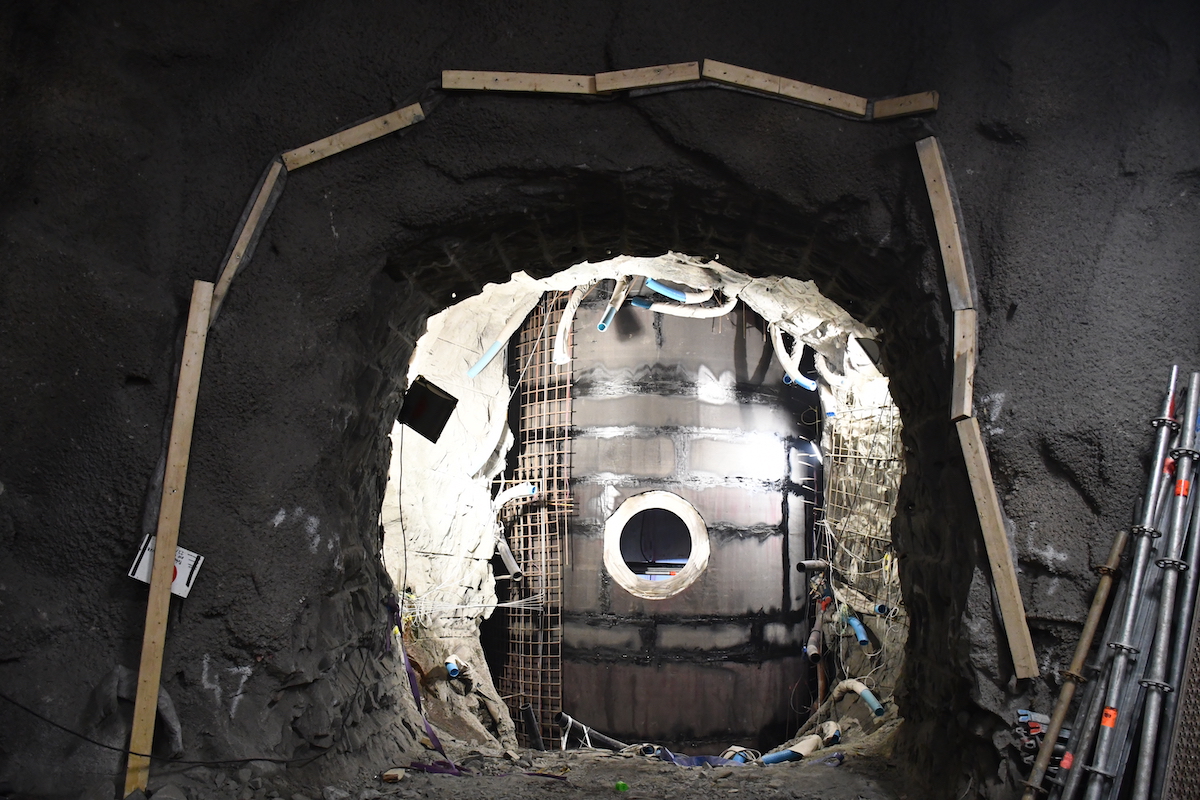SSAB, LKAB and Vattenfall are inaugurating HYBRIT’s pilot facility for fossil-free H2 gas storage at Svartöberget in Luleå, Sweden. The rock cavern storage facility is the first of its kind in the world. The inauguration ceremony marks the start of the two-year test period, which will run until 2024.

The HYBRIT initiative was launched in 2016 by SSAB, LKAB and Vattenfall. The H2 storage facility will play a very important role in the overall value chain for fossil-free iron and steel production. Producing fossil-free H2 gas when there is a lot of electricity, for example when it is very windy, and using stored H2 gas when the electricity system is under strain, will ensure a steady production of sponge iron, the raw material behind fossil-free steel.
“Sweden will create new jobs by leading the climate change transition, and HYBRIT is a good example of doing just that with green technology and innovation. When we build the energy system of the future, we need to both take advantage of opportunities to store energy and ensure that large energy users can be flexible in their consumption. This is exactly what HYBRIT does through its unique H2 storage,” said Minister for Energy and Digital Development Khashayar Farmanbar.
"We want to develop HYBRIT so that it is in line with the electricity system of the future, with more weather-dependent electricity generation. The storage facility is unique and once again the HYBRIT initiative is taking the lead in the fossil-free transition. HYBRIT is very important for facing the climate challenge and enabling fossil-free living within one generation," said Andreas Regnell, Chairman of the Board, Hybrit Development AB and Senior Vice President and Head of Strategic Development at Vattenfall.

"SSAB has the opportunity to transform our operations and cut 10% of Sweden’s total carbon dioxide emissions as well as 7% of Finland’s, and this will take us one step closer to our goal. The H2 storage facility is an important piece of the puzzle in ensuring stable steel production and a milestone in the development of HYBRIT," said Martin Pei, CTO at SSAB.
"H2 gas and its storage are central to our transition. In four years, HYBRIT technology will be used on a large scale in the first demonstration plant in Gällivare, and the plan is to then build more sponge iron factories. LKAB will therefore need to become one of Europe’s biggest H2 producers, and this pilot project will provide valuable knowledge for the continuing work on creating the world’s first fossil-free value chain for the iron and steel industry," said Lars Ydreskog, Senior Vice President Strategic Projects at LKAB.
"The pilot plant is important in order to really test and understand how large-scale H2 storage works. Storage of H2 gas will be an important piece of the puzzle for a fossil-free value chain for the iron and steel industry, but also in a future robust electrical system," said Klara Helstad, Head of Sustainable Industry Unit at the Swedish Energy Agency.
The technology for storing gas in a lined rock cavern (LRC) is well proven and has been used in southern Sweden for about 20 years for storing natural gas. Now the technology is taking a step forward with the development for storage of H2 gas, and the storage facility will also be used more dynamically, being filled and emptied at pace with the H2 production.
The pilot plant has a size of 100 m3. At a later stage, a full-scale H2 gas storage facility measuring 100,000 to 120,000 m3 may be required, in which case it will be able to store up to 100 GWh of electricity converted to H2 gas, which is sufficient to supply a full-sized sponge iron factory for three to four days.
Using HYBRIT technology, SSAB can reduce Sweden’s carbon dioxide emissions by 10%. SSAB, LKAB and Vattenfall invest a total of SEK 259 MM in the H2 storage itself, divided into three equal parts, and the Swedish Energy Agency contributes with SEK 72 MM.
Facts about the H2 gas storage facility: